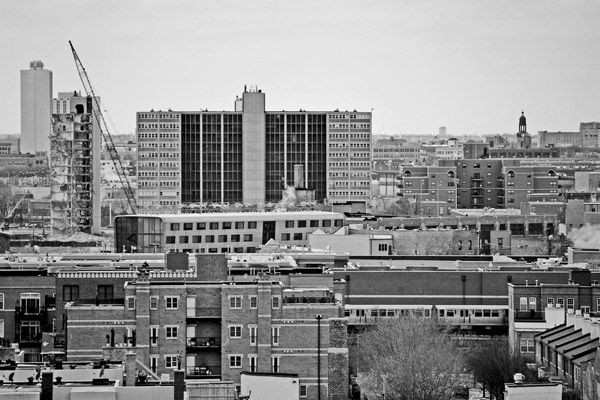
Awhile back the sociologist Edward Glaeser (along with Jacob L. Vigdor) wrote a paper entitled "End of the Segregated Century." A less engaging but more accurate title would have been something like "Country Makes Good or Modest Progress on Segregation Depending On Your Time Frame and Location (But We Can't Exactly Brag About Some of It)." And some of the coverage was inevitably misleading; "metropolitan statistical areas" was conflated into "cities," even though there's a big difference between Chicago and Chicago-Naperville-Joliet. Chicago, of course remains quite segregated; the Reader has some excellent maps demonstrating this.
But that's not quite as exciting as writing:

(The headline, as opposed to the title tag, on the story is the less Onionish "Segregation Curtailed in U.S. Cities, Study Finds.")
Unfortunately, the story outpaced the caveats. But with those caveats, it wasn't bad news per se. In the Chicagoland area, the "dissimiliarity" index dropped from 91.1 to 71.9, likely due to a combination of the great migration's reversal and the increasing diversity of the suburbs. It also meant that the Chicago area, the most segregated in the country, was now third behind Milwaukee and Detroit.
But race is only one measure of diversity. Another, and a particularly pressing one, is economic segregation. And at least by one measure, Chicago scores very poorly as well.
The Brookings Institution just released a paper looking at housing, income, and school inequality. The findings are what you'd guess, if you've ever looked for a house, a school, or both:
The housing-cost gaps between neighborhoods with high-scoring and low-scoring schools revealed here confirm that it is financially impossible for many working-poor families to access high-scoring schools in the absence of lottery systems or other aggressive district efforts to integrate schools. For many families, it would be cheaper to send a child to a parochial or even more expensive private school than to move into the attendance zone of a high-scoring school.
* In Chicago, the "housing cost gap" is large: costs (a combination of renting and buying) are over twice as high in neighborhoods near high-scoring elementary schools than in low ones. In context, the metro area has the 32nd biggest gap out of the 100 largest metros.
* The area does worse on the "test score gap": 24th in the country, with a 26-point gap between middle/high-income schools and low-income schools.
* The authors pinpointed zoning as a driver of these inequalities, because of the relationship between restrictive zoning, low density, and high prices, but on that the area does best, the 70th most restrictive out of 100.
* On economic segregation? As a measure of how many low-income students would have to move to achieve equal distribution (a measurement similar to how racial diversity is measured), Chicago is second-worst in the country, behind Bridgeport, Connecticut, 61 to 58 percent.
Amazingly, the Bridgeport MSA ranks first across the board: most restrictive zoning, highest economic segregation, highest housing-cost gap, and highest test-score gap. Or not so amazing: it's a collapsed industrial area that doubles as a low-tax residential haven for New York commuters and financiers, described as a "hedge-fund ghetto." So it's a bit of a geographic outlier, being able to draft off of the biggest financial market in the world.
That's the only metro area ahead of Chicago.
It's moderately good news that racial segregation in the Chicago-Joliet-Naperville area has declined, but racial diversity is only one measure. High ranks in both racial and economic diversity is a worrisome combination.
Photograph: Monika Thorpe (CC by 2.0)


